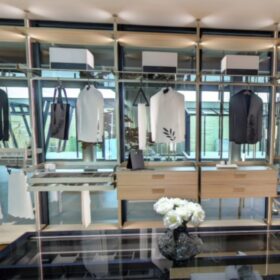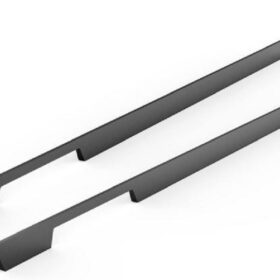Choosing Between Different Curtain Wall Aluminum Section Profiles
Curtain walls, composed of non-load-bearing external walls, provide buildings with both aesthetic and functional benefits. Aluminum section profiles, integral components of curtain walls, play a crucial role in shaping a building’s appearance and performance. Choosing the right aluminum section profiles is essential for achieving optimal results.
Factors to Consider
Material Composition
The alloy composition of aluminum section profiles determines their strength, durability, and corrosion resistance. Common alloys used in curtain walls include 6063, 6061, and 6005. 6063 offers good strength and corrosion resistance, while 6061 is known for its high strength-to-weight ratio. 6005, on the other hand, provides excellent corrosion resistance and formability.
Profile Shape
The shape of aluminum section profiles influences their structural integrity and aesthetic appeal. Various shapes are available, including U-profiles, T-profiles, and L-profiles. U-profiles offer good strength and stability, while T-profiles are preferred for load-bearing applications. L-profiles are commonly used as support members and for connecting different sections.
Profile Size
The size of aluminum section profiles impacts their load-bearing capacity and visibility. Larger sections provide greater strength but may be more obtrusive. Smaller sections offer a more discreet appearance but may require additional support. The choice depends on the specific requirements of the project.
Thermal Performance
Aluminum section profiles can be thermally improved to reduce heat transfer and improve energy efficiency. Thermal breaks, typically made of polyamide or fiberglass, are inserted between the inner and outer sections of the profile to create a barrier that minimizes thermal conductivity.
Finishing
The finishing applied to aluminum section profiles affects their appearance and durability. Anodizing creates a protective oxide layer that enhances corrosion resistance and can be colored for aesthetic purposes. Powder coating offers a wide range of colors and textures, providing both durability and a custom look.
Additional Considerations
Cost and Availability
The cost and availability of different aluminum section profiles should be considered when making a selection. Some profiles may be more readily available or cost-effective than others.
Compatibility and Integration
Ensure that the chosen aluminum section profiles are compatible with other components of the curtain wall system, such as glazing and hardware. Proper integration is crucial for a seamless and functional assembly.
Sustainability and Environmental Impact
In today’s environmentally conscious world, it is important to consider the sustainability and environmental impact of the aluminum section profiles. Recycled aluminum profiles reduce waste and promote resource conservation.
Conclusion
Choosing the right aluminum section profiles for curtain walls requires careful consideration of various factors, including material composition, profile shape, size, thermal performance, finishing, cost, availability, compatibility, and sustainability. By weighing these aspects and consulting with experienced industry professionals, architects and contractors can make informed decisions that meet the aesthetic, functional, and sustainability requirements of their projects.
-
2024-11-29Top Trends in Modern Kitchen Cabinet Pulls for 2024
-
2024-11-28The Ultimate Guide to Modern Kitchen Cabinet Pulls- Materials, Styles, and Tips
-
2024-11-27Elevate Your Kitchen Design with These Must-Have Modern Cabinet Pulls
-
2024-11-26Sleek and Stylish- The Best Modern Kitchen Cabinet Pulls for a Contemporary Look










